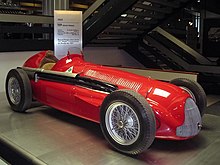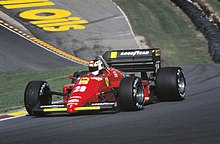
UNITED STATES AT THE OLYMPICS MEDALS: What is the status?
With a long history of winning medals in the Olympics.
The United States has cemented its status as a major force in international sports. Team USA leads the world in total medal counts. Having won hundreds of medals in both the summer and winter games.
Who is Michael Phelps? Is he a gold medalist for US swimming and an extraordinary player like Fish?
Well-known competitors who have won gold medals. And broken world records include those of Carl Lewis, Simone Biles, and Michael Phelps.<iframe width=”560″ height=”315″ src=”https://www.youtube.com/embed/9QHRGtWuwkU?si=WGNrtktzG9kx2TC7″ title=”YouTube video player” frameborder=”0″ allow=”accelerometer; autoplay; clipboard-write; encrypted-media; gyroscope; picture-in-picture; web-share” referrerpolicy=”strict-origin-when-cross-origin” allowfullscreen></iframe>
The United States’ medal haul in the Olympics is indicative. Both the country’s dedication to sports excellence and its physical skill.
Does the dedication and hard work towards sports at the Olympics pay off?
In conclusion, the achievement of the United States in winning Olympic medals is a credit. To the skill, perseverance, and hard work of its athletes. It represents a proud moment in the history of the sport in the country. 
Does the United States dominate the Olympics in terms of medals? 
Beyond just one sport, the United States dominates the Olympics. With a wide variety of skills. American athletes have always excelled in track and field. Swimming, gymnastics, and winter sports like snowboarding and figure skating.
Outstanding results in team sports like basketball and relay races are included. In the United States’ Olympic medal record. Which adds to the country’s total medal count. Every Olympic Games contributes to the rich history of the country. As fresh athletes step up to carry on the winning legacy,
In conclusion, the United States’ Olympic medal collection serves as a reminder of the country’s unwavering spirit of competition and winning mentality, encouraging athletes of the future to strive for Olympic success. 
CONCLUSION:
The United States Olympic medal collection is a symbol of the nation’s endurance. Competitive spirit and relentless pursuit of victory. 
Inspiring future generations of athletes to aim for Olympic glory. 
In conclusion, the United States Olympic medal success is a testament.
To the hard work, dedication and talent of its athletes.
Making it a proud chapter in the nation’s sporting history.
The United States has consistently dominated the Olympic competition. And the 2024 Summer Olympics in Paris will be no different. 
The most recent results show that Team USA is still dominant in a number of sports. The competitors have already added to the nation’s tradition of greatness. With an outstanding collection of medals. In swimming as well as track and field, the US has shown incredible talent. 
Highlights include gold medal wins in gymnastics and swimming, led by exceptional athletes.
These triumphs highlight the tenacity and will of the American squad, restoring national pride.
The United States is expected to finish first in the medal standings as the games go on, enhancing its standing as a major force in international sports. Watch this space for
United States at the Olympics: 
The United States of America has sent athletes to every celebration of the modern Olympic Games. With the exception of the 1980 Summer Olympics. During which it led a boycott in protest of the Soviet Union invasion of Afghanistan. 
The United States Olympic Paralympic Committee (USOPC) is the national Olympic committee for the United States.
<iframe width=”560″ height=”315″ src=”https://www.youtube.com/embed/9QHRGtWuwkU?si=YicvIL8M4sW1MrjG” title=”YouTube video player” frameborder=”0″ allow=”accelerometer; autoplay; clipboard-write; encrypted-media; gyroscope; picture-
in-picture; web-share” referrerpolicy=”strict-origin-when-cross-origin” allowfullscreen></iframe>
<iframe width=”560″ height=”315 src=”https://www.youtube.com/embed/FeTTN2aMsn0?si=4_DyIYUkmV0vvwAA”
title=”YouTube video player” frameborder=”0″ allow=”accelerometer; autoplay;
clipboard-write; encrypted-media; gyroscope; picture-in-picture; web-share” referrerpolicy=”strict-origin-when-cross-origin” allowfullscreen></iframe>
American athletes have won a total of 2,764 (1,105 of them gold) at the Summer Olympic Games.
And another 330 (114 of them gold) at the Winter Olympic Games.
Making the United States the most prolific medal-winning nation. In the history of the Olympics.
The US has placed first in the Summer Olympic medal table 19 times. Out of 30 Summer Olympics and 29 appearances, 
But it has had less success in the Winter Olympics, placing first once in 24 participations.
The U.S. remains one of the only major teams in the world to receive no government funding.
Hosted games:
<iframe width=”560″ height=”315″ src=”https://www.youtube.com/embed/6wn8Lp_u88Y?si=gy9Qp4LF3_cyuZbH”
title=”YouTube video player” frameborder=”0″ allow=”accelerometer; autoplay;
clipboard-write; encrypted-media; gyroscope; picture-in-picture; web-share”
referrerpolicy=”strict-origin-when-cross-origin” allowfullscreen></iframe>
The US has hosted the modern Olympic Games eight times.
More than any other nation. 
These occasions span from the 1904 St. Louis Olympics to the 2002 Salt Lake City Winter Olympics. 
Beyond hosting, the US has significantly impacted the Olympics. Through athletic achievements and innovations in sports infrastructure. 
Technology and cultural contributions are still used today. 
In 2028, the third Los Angeles Olympics will mark the ninth occasion. That the Olympics are hosted in the US.
Paris 1924 Olympics games:
Aug 11, 2024, 8:26 PM ET (AT)
Paris closes the Olympics, and Los Angeles turns to Tom Cruise for its 2028 mission.
The Paris 1924 Olympic Games were an athletic festival held in Paris. That took place on May 4–July 27, 1924. The Paris Games were the seventh occurrence of the modern Olympic Games.
www.United States at the Olympics medals.com
The 1924 games represented a coming age for the Olympics. Held in Paris in tribute to Pierre de Coubertin, the retiring president of the International Olympic Committee (IOC), and founder of the Olympic movement, the games featured a high caliber of competition.
International federations had gained more influence over their respective sports.
Standardizing the rules of competition, and national Olympic organizations. Most countries conducted trials to ensure that the best athletes were sent to compete. 
More than 3000 athletes, including more than 100 women, represented a record 44 countries.
Fencing was added to the women’s events, although the total number of events decreased because of a reduction in the number of shooting and yachting competitions.































